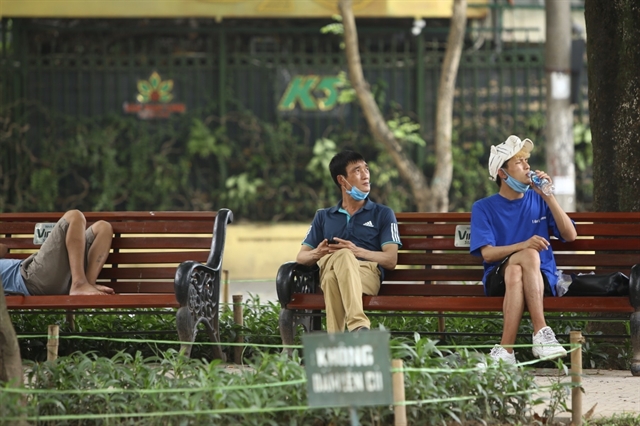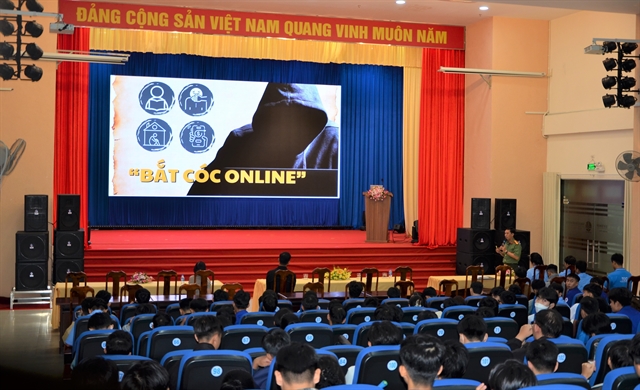 Society
Society

Hà Nội remains in the high-risk group and should have social distancing measures extended until April 30, the national steering committee on COVID-19 control and prevention said on Wednesday morning.

|
| Hà Nội residents hang out at Bác Cổ Flower Garden amid the social distancing period. Photo taken on Tuesday morning. — VNA/VNS Photo Minh Quyết |
HÀ NỘI — Hà Nội remains in the high-risk group and should have social distancing measures extended until April 30, the national steering committee on COVID-19 control and prevention said on Wednesday morning.
The plan will be proposed to the Government. The same day Directive No16 on nationwide social distancing measures that took effect on April 1, meant to curb the spread of the novel coronavirus, is supposed to expire.
According to the committee, the reporting of community-acquired infections is a critical factor to classify localities into risk groups.
The high-risk group and medium group include those confirming community transmission infection cases in the past 14 days and 15 to 28 days, respectively. Any locality which has not reported new cases in the last 28 days is put in the low-risk group.
After discussions with experts and 28 localities, the committee agreed on the new classification in which Hà Nội is named in the high-risk group. HCM City, Bắc Ninh Province and Hà Giang Province are medium-risk localities. The low-risk group includes the other 59 provinces.
The committee proposed to prolong the application of social distancing measures for the high-risk group. However, Prime Minister Nguyễn Xuân Phúc allowed Hà Nội People’s Committee to decide on the resumption of unessential services and the pavement economy while assertively taking preventive measures.
Although HCM City reported its latest COVID-19 case 25 days ago, because of its dense population and other risk factors, the city is still placed in the medium-risk group which require drastic mechanisms in containing the disease.
Bắc Ninh Province confirmed the latest case on April 11, less than 14 days.
Meanwhile, Hà Giang reported an infection on April 8 with complicated epidemiological history and risks of community transmission. The province is also exposed to the outbreak because of shortcuts between Việt Nam and China which create loopholes for the disease to spread despite efforts by the local border guard force.
In low-risk localities, unessential services are allowed to re-open and requested to ensure preventative measures including maintaining a safe distance among people.
The committee also asked localities to pay more attention to vulnerable groups including workers in the informal sectors and students as well as test patients with COVID-19-like symptoms.
“Although the situation is improved, we cannot be negligent,” said Deputy Minister Vũ Đức Đam, the committee’s head.
“Loosened measures have to be decided based on scientific evidence and international references,” he added.
The Government will consider the proposal and issue the final decision at meeting on Wednesday afternoon which will be applied from Thursday.
Earlier, on April 15, the Prime Minister decided to divide localities into risk groups, with Hà Nội, HCM City, Đà Nẵng City, provinces of Lào Cai, Quảng Ninh, Bắc Ninh, Ninh Bình, Quảng Nam, Bình Thuận, Khánh Hoà, Tây Ninh and Hà Tĩnh classified as high-risk.
Fifteen localities at medium risk are Bình Dương, Cần Thơ, Đồng Nai, Hà Nam, Hải Phòng, Kiên Giang, Nam Định, Nghệ An, Thái Nguyên, Thừa Thiên-Huế, Sóc Trăng, Lạng Sơn, An Giang, Bình Phước and Đồng Tháp.
Other provinces are in the low risk group. — VNS




